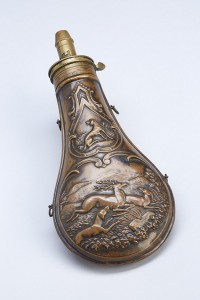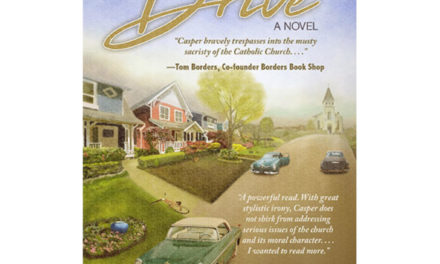Kentucky by Design, The Decorative Arts and American Culture
Illustrated, 328 pages
University Press of Kentucky 2015
Hardcover $50 on Amazon and University Press of Kentucky.
Book and exhibition chart early decorative arts made in Kentucky
Review by Carmen Marti
Entire contents copyright © 2016 Carmen Marti. All rights reserved
Not since Phyllis George Brown brought broad national attention to Kentucky in her 1989 book Kentucky Crafts has Kentucky’s legacy of functional folk design enjoyed the spotlight provided in Kentucky by Design, The Decorative Arts and American Culture.
The new compendium, edited by Andrew Kelly, is organized around the objects from Kentucky that were included in the National Index of American Design. Compiled between 1935 and 1942 under the auspices of the Federal Art Project, the Index cataloged objects with a uniquely American design aesthetic, as opposed to pieces reflecting a European influence. The creators sought to illuminate and define the distinctive national style that would inform American Modern Art.

Index rendering by George V. Vezolles, ca. 1939, watercolor, graphite, and gouache on paperboard, 18 × 14 inches.
Approximately 4,000 photographs and 18,000 watercolor renderings, now housed at the National Gallery of Art, were produced for the Index. Illustrators from across the country sought the WPA work, which, while temporary, supplied high quality materials and could include studio space. The artists selected, often women, were rigorously trained to depict the objects precisely.
The Index, and the objects made in Kentucky included in it, was long a subject of interest (passion may be more accurate) for Allan Weiss, an attorney from New York. First captivated by folk music in the 1950s, Weiss fell in love with Kentucky’s special style of folk art, whether manifest in music, architecture, or domestic objects. In the 1970s, he began collecting pieces such as duck decoys and walking sticks, expanding his focus over time to include all objects of material culture. Eventually Weiss took it upon himself to find all the objects from Kentucky in the Index, and to provide an archive to the public.
Persevering in his quest despite a thriving legal career and burgeoning family, Weiss felt the research and collection phases of his mission were complete in 2012. He approached Madeleine Burnside, then Executive Director of the Frazier History Museum in Louisville. She was immediately interested in producing an exhibition, what would be the first ever to explore the Index within the context of a single state.
The exhibition, “Kentucky by Design: The Decorative Arts and American Culture,” and its attendant scholarship are captured in the oversized (9×12), 328-page book of the same name. At once a scholarly contribution to the literature on American design and an elegantly designed, beautifully illustrated coffee table book, the volume provides more than 200 photographs of Kentucky artifacts as well as a checklist of Kentucky items in the Index.
Three essays provide context and rationale for the Blue Grass state archive, with emphasis on Kentucky folk art, Shaker renderings, and regionalism, modern tastes, and cultural nationalism. Four appendices provide interviews of folk icons ranging from Adele Brandeis, administrator of Kentucky’s contributions to the Federal Art Project; to Holger Cahill, national director of the FAP from 1935 – 43; Edith Gregor Hapert, gallerist and cultural change-maker; and Constance Rourke, national editor and resident scholar at the Index from 1935 – 36. A fifth appendix provides the Index of American Design manual for 1938, the guide used by the artists, illustrators, and photographers working on the project, as well as everyone else from administrators to universities to private collectors. And the sixth and final appendix shows a collection of cupboards from the Gerald R. McMurtry Collection.
Contributions were made by Madeleine Burnside, Allan Weiss, Jean M. Burks, Erika Doss, Jerrold Hirsch, Philippe Chavance, Lauren Churilla, Larrie Curry, Michelle Ganz, Mel Hankla, Kate Hesseldenz, Tommy Hines, Lee Kogan, Ron Pen, Janet Rae, and Shelly Zegart.
Edited by Andrew Kelly, Helena Rubinstein Fellow of the Whitney Museum of American Art and author, the book ultimately offers readers a primer on Kentucky’s formative role in the emerging American Mid-20th century Modern aesthetic. At the same time, it revives the effort left by the Federal Art Project when it shut down in 1943 in the shadow of World War II. Like the Index, Kentucky by Design celebrates American style, documenting its features for public edification. But Kelly is able to fulfill one aspect of the original initiative that had been abandoned: to publish the Index for broad distribution. Though only a slice of the Index, Kentucky by Design stands as a representative sample of an early American design vernacular, and a resource for students and collectors interested in the era.
The “Kentucky by Design” exhibition will run at the Frazier History Museum in Louisville from Aug. 4, 2016, through Feb. 12, 2017.
Carmen Marti. As a professional writer and editor for more than 20 years, and an independent contractor since 1995, Carmen has worked as a journalist, publicist, senior writer, editor, project manager, communications specialist, web content developer, and strategic consultant. Her clients have ranged from the Chicago Tribune newspaper to Glamour magazine; Arts-Louisville.com to arts4learning.org; the University of Chicago to the Coalition for Improved Education in South Shore (CEISS); and the Illinois College of Optometry to Kovler Diabetes Center. Before establishing a full time freelance career, Carmen worked as a publicist for the University of Chicago News Office from 1991-1995, as an editorial assistant for Inside Chicago magazine from 1989-1991, and as a high school English and humanities teacher at the Harvard School from 1986-1990.






